A rare discovery of an Allosaurus found in Wyoming’s famous Jurassic Mile has the dinosaur world excited over the bones which are mostly intact with evidence of injuries and even skin.
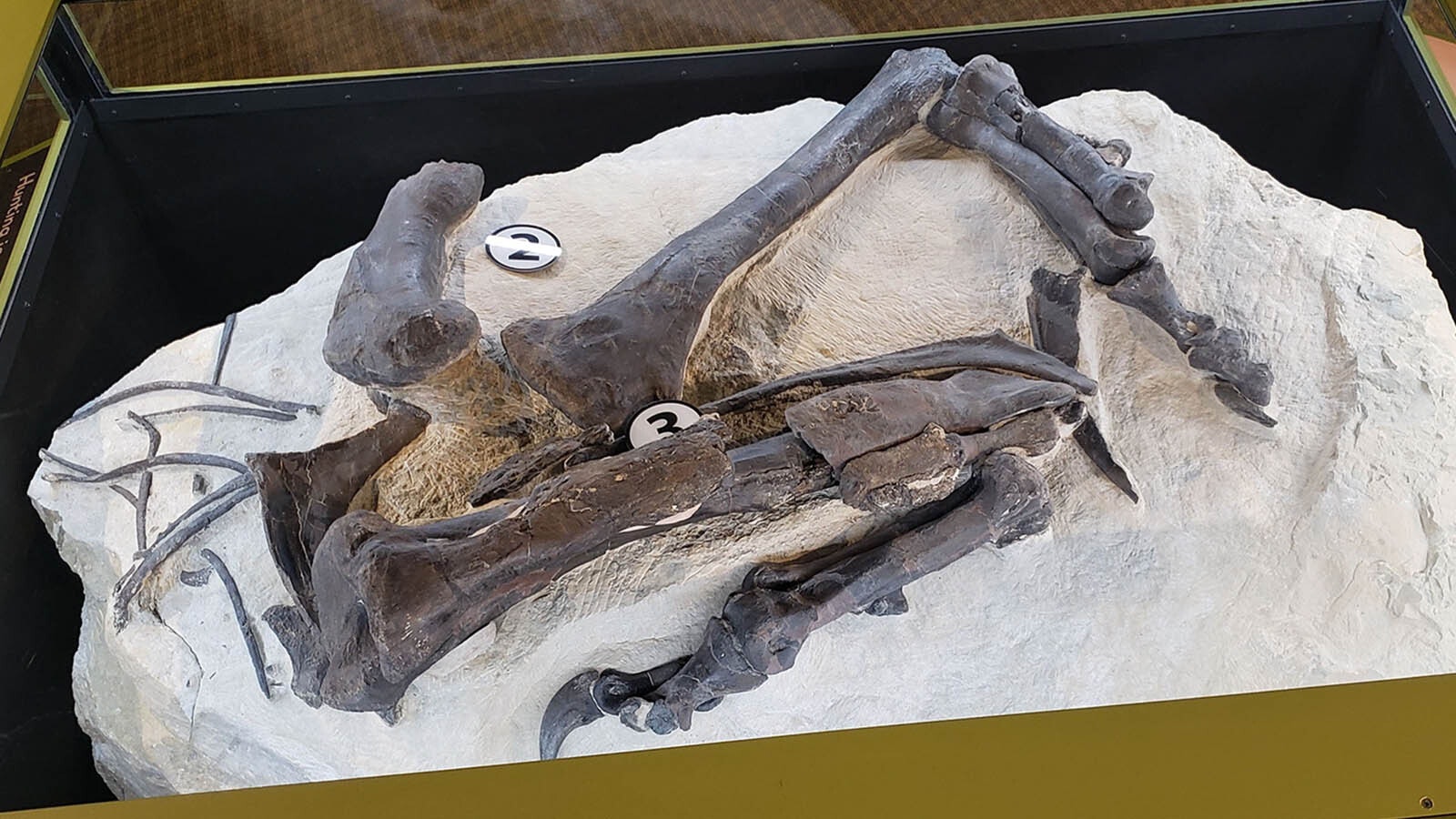
The newest exhibit outside the museum’s fossil preparation lab is a block of rock containing the lower leg bones of an Allosaurus, the ferocious Late Jurassic predator that roamed Wyoming around 150 million years ago.

But this Allosaurus is more than a pair of nice legs. It’s another discovery that makes the Jurassic Mile the gift that keeps on giving.
“We’ve been digging in this area since 2017,” said Laura Rooney, curator of paleontology at the Children’s Museum. “And we see no stopping anytime soon. It’s kept us very happy the whole time.”

Rooney has been excavating dinosaur fossils at the Jurassic Mile for years. She helped find bones from two giant long-necked sauropods, which are already on display at the museum.

“We never expected to find anything in those particular layers,” Rooney told Cowboy State Daily. “But when one scoop came out, we saw a little glimpse of something darker in color, a little bit shiny. We told the excavators to stop and let us take a look.”
The darker, shiny spot was a chunk of dinosaur bone.
It’s not unusual for an exciting discovery to start with an excavator finding a piece out of place, but further excavation (by hand) revealed something extraordinary.

“All of the pieces were just lying there perfectly in one big block,” Rooney said. “That was the first sign that we had something pretty cool here.”
The big block contained the legs and feet of an Allosaurus. But all the bones, from the delicate toes to the long lower and upper legs, were connected as they would’ve been when the dinosaur was alive, something paleontologists call articulation.
That wasn’t all. As Rooney and the rest of the team kept digging, they realized they could be finding all of an Allosaurus.
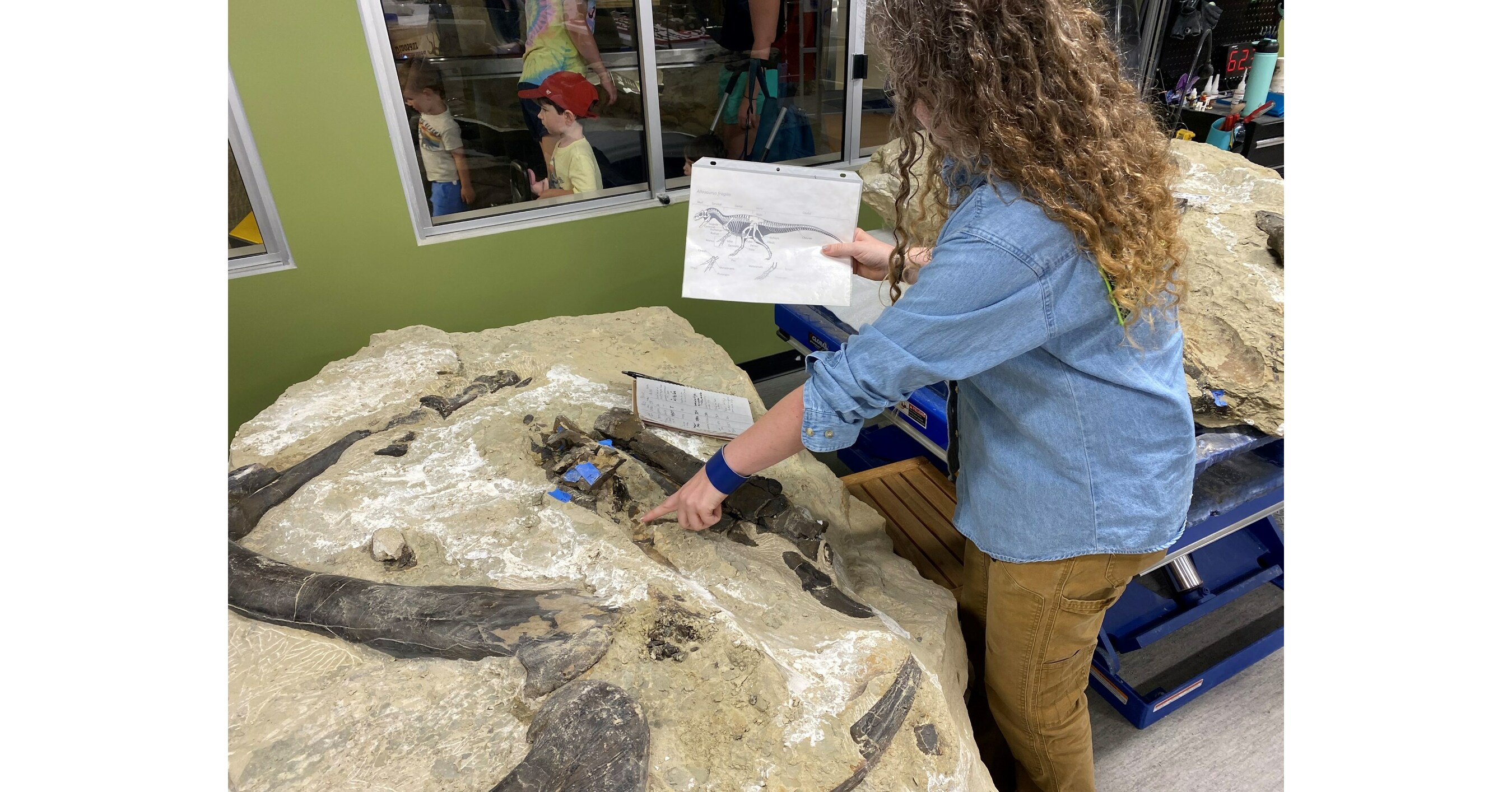
“There is a good chunk more of the dinosaur that is articulated,” she said. “We know we have a majority of the tail, the ribs and hips of this animal, as well as the neck and part of the sacrum.”
While it may have been articulated in the field, the blocks containing the articulated Allosaurus are now in multiple pieces in the museum’s fossil preparation lab. Visitors can peer through the windows and watch fossil preparators at work using dental picks and air tools to remove tiny bits of hard rock from the black fossils underneath the surface.
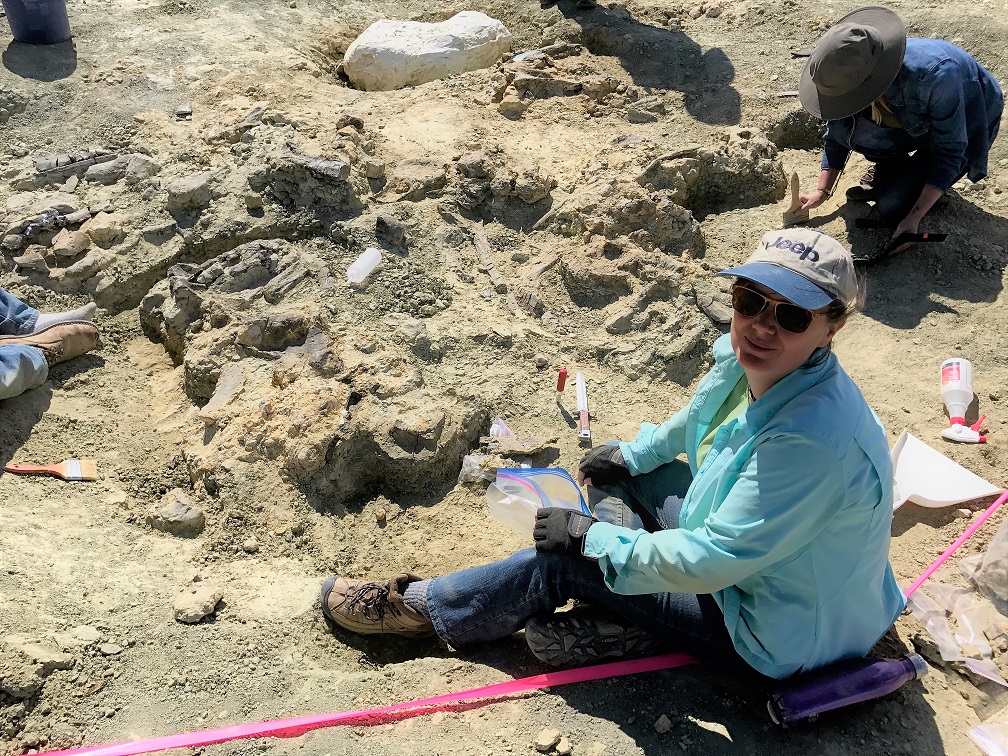
Skin And Bones
Everyone gets excited about a new dinosaur skeleton, but paleontologists are most excited when they find articulated skeletons. Finding an intact dinosaur is a sign its body was buried quickly after it died without much dismemberment from water, decay or scavengers.
Articulated skeletons also mean a chance of preserved skin. Several “dinosaur mummies” with skin impressions stretched across their bare bones like a giant reptilian zombie have been found in Wyoming.
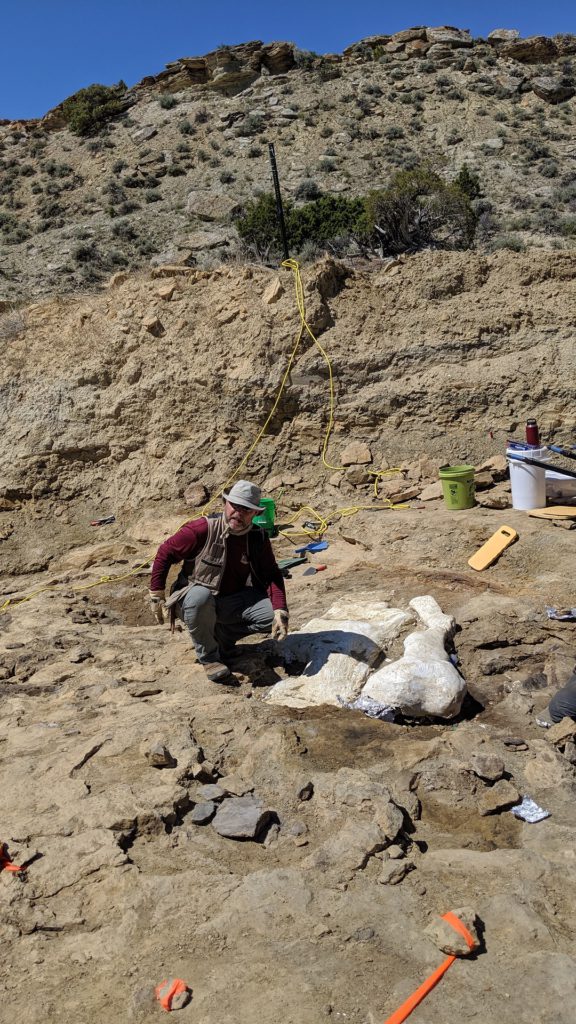
The Jurassic Mile’s Allosaurus is showing a lot of skin in areas where impressions have never been found before. Rooney said they’ve identified skin impressions around the legs, but also the hips, chest and neck of their Allosaurus.
Heading In The Right Direction
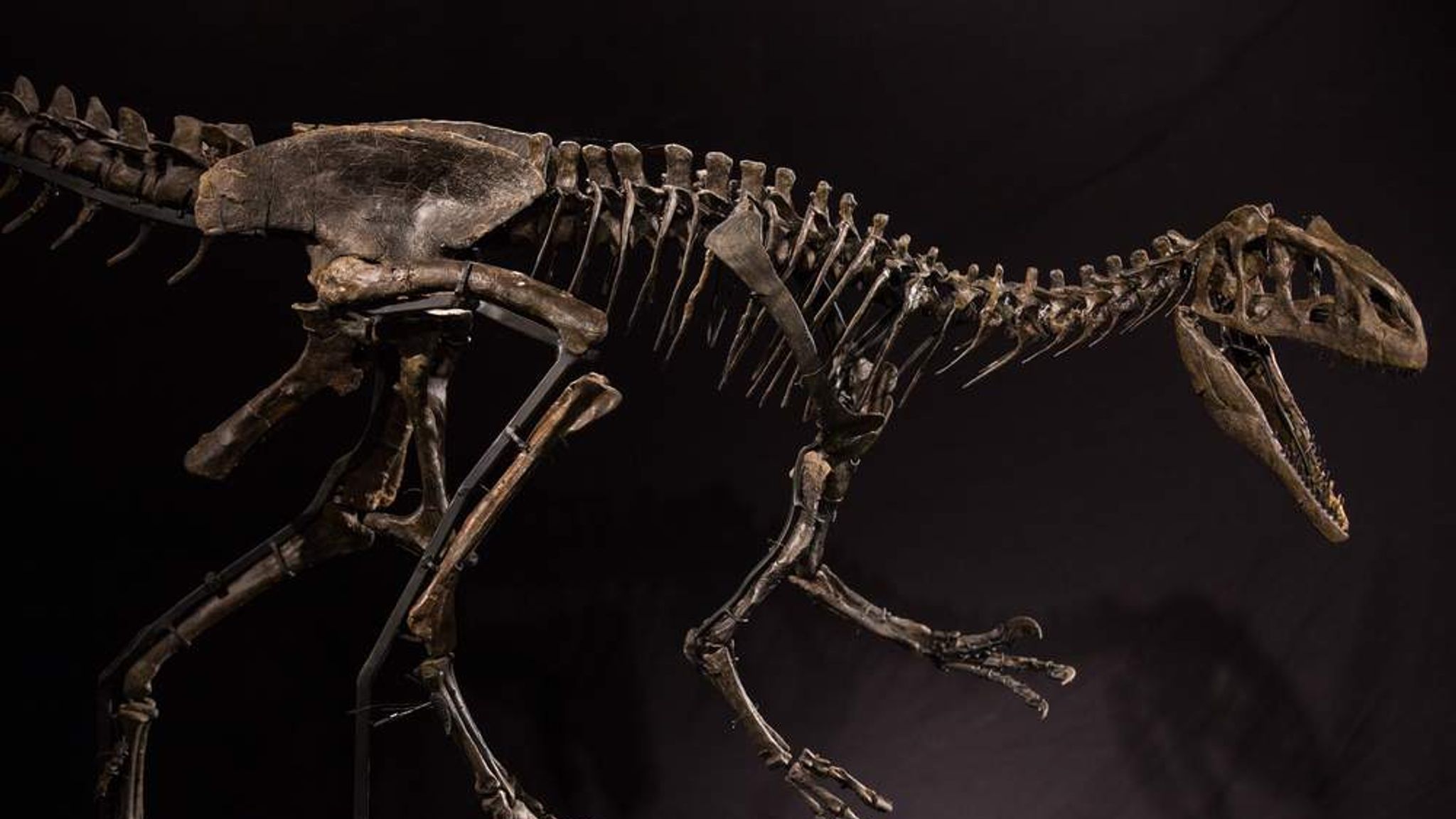
“The block of our of the Allosaurus skull and neck is in our lab, but one pretty noticeable part of it that’s missing is its snout,” she said. “We still have that snout back in the ground in Wyoming. We know it’s there, and we will rescue that snout and reunite it with the rest of the skull. That’s our big plan for this summer.”

Rooney and Frederickson said their summers in Wyoming are “the best time of the year.” They long to resume their excavations this summer, where the perfect-age prehistoric rocks and stunning vistas are a welcome break from the flatness of Indiana, a stare utterly devoid of dinosaurs.